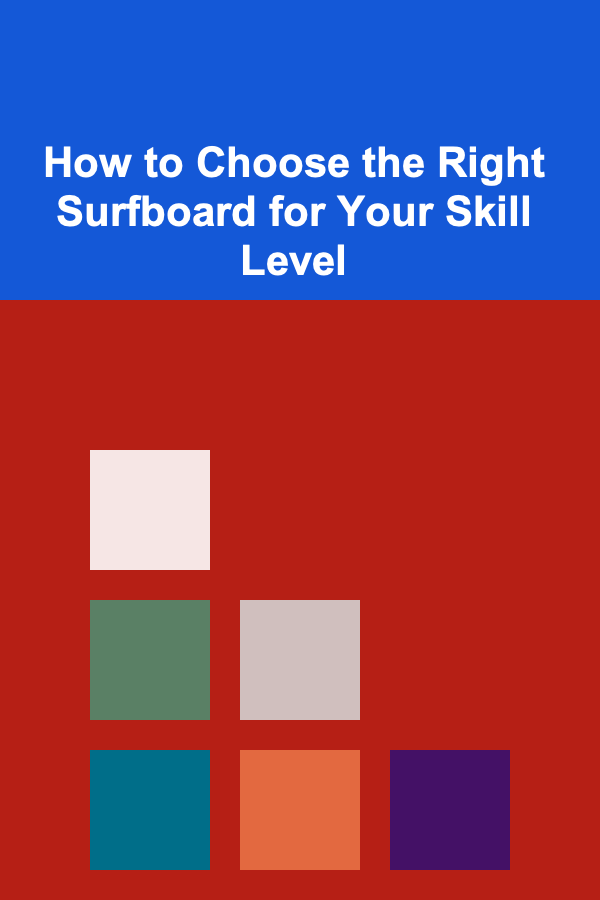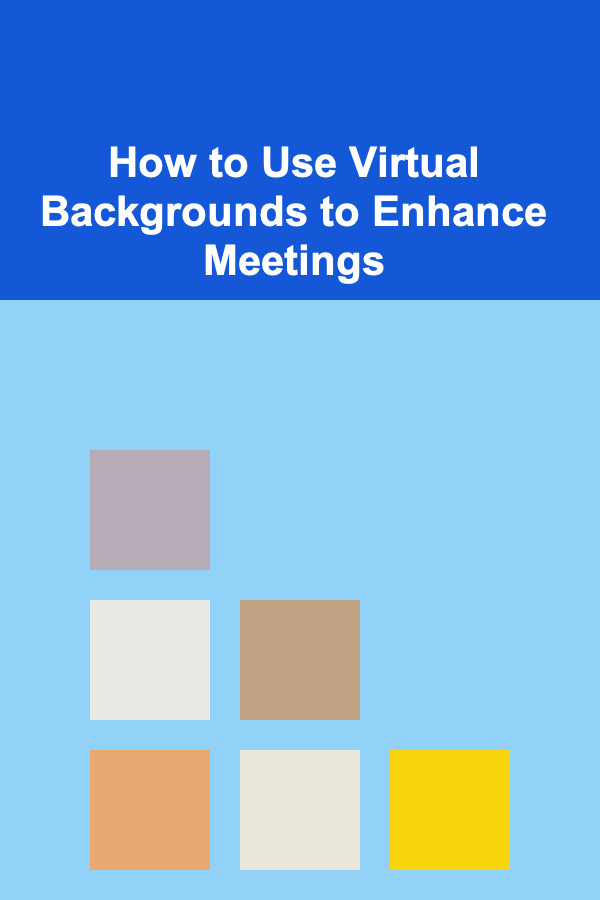
How to Choose the Right Surfboard for Your Skill Level
ebook include PDF & Audio bundle (Micro Guide)
$12.99$10.99
Limited Time Offer! Order within the next:

Surfing is a thrilling, challenging, and rewarding sport that requires the right equipment to enhance your experience. One of the most crucial pieces of gear you'll need is a surfboard. Whether you're a beginner learning the basics of balance or an experienced surfer looking for a high-performance board, selecting the right surfboard is key to your success on the waves. In this article, we will guide you through the process of choosing the perfect surfboard based on your skill level, surf conditions, and personal preferences.
Understanding Different Types of Surfboards
Before diving into the specifics of selecting a surfboard for your skill level, it's important to understand the different types of surfboards available on the market. Each type of board is designed for specific conditions and surfing styles.
-
Longboard:
- Typically ranging from 8 to 10 feet long.
- Offers stability and ease of paddling, making it an ideal choice for beginners.
- Perfect for small to medium-sized waves, and great for cruising along the wave.
- Provides more room for balance and control, which is essential for newcomers.
-
Shortboard:
- Generally 5 to 7 feet in length.
- Designed for speed and agility, offering better maneuverability.
- Best for experienced surfers who want to perform sharp turns and ride steeper waves.
- More challenging to balance on due to its smaller surface area.
-
Fish Board:
- Shorter than a standard shortboard, often around 5 to 6 feet long.
- Features a wide, flat design and twin fins for increased stability and speed.
- Great for small to medium-sized waves, providing an exciting, fast ride.
- Ideal for surfers with intermediate skills who want to experiment with tricks and turns.
-
Funboard:
- Typically between 7 and 8 feet long.
- A hybrid between longboards and shortboards, offering a good balance of stability and maneuverability.
- Suitable for both beginners and intermediate surfers, allowing for easy paddling with enough performance for progressive surfing.
-
Soft-top Board:
- Covered in soft foam, which provides extra safety, especially for beginners.
- Great for learning the basics of surfing and for younger or more cautious surfers.
- Soft-top boards can range from longboards to shortboards and provide ample flotation and a comfortable ride.
Choosing a Surfboard Based on Your Skill Level
1. Beginner Surfers
If you're just starting, the goal is to find a board that is stable, easy to paddle, and forgiving as you learn the basic techniques of surfing, such as paddling, popping up, and riding waves. The ideal surfboard for beginners should have the following characteristics:
- Length: Longboards are the best option for beginners. Their larger size offers more stability and makes it easier to catch waves. A longboard that's around 8 to 9 feet long is perfect for new surfers.
- Width and Thickness: A wider and thicker board will provide more buoyancy, which helps you stay afloat and maintain balance. Boards with more volume are forgiving when you're learning to paddle out through the surf.
- Soft-top vs. Hard-top: Soft-top surfboards are ideal for beginners due to their safety features. They reduce the likelihood of injury during falls and provide a cushioned ride.
- Shape: A board with a round nose and a wide tail will give you extra stability. The shape allows for easier wave-catching and is more forgiving when you're learning.
In summary, a soft-top longboard is the best choice for beginners. It provides the stability needed to build your skills, encourages better paddling, and helps you gain confidence in the water.
2. Intermediate Surfers
Intermediate surfers have mastered the basic techniques and are looking to improve their wave-riding skills, such as making turns, carving, and riding different types of waves. At this stage, you'll need a board that offers a balance between stability and maneuverability.
- Length : A funboard or a shortboard between 7 and 8 feet is a great choice for intermediate surfers. These boards allow for both control and freedom to explore more advanced maneuvers.
- Width and Thickness: As your skills improve, you can opt for a board that is slightly thinner and narrower than what you would choose as a beginner. However, make sure it still has enough volume to maintain balance.
- Shape : At this point, you may want a more performance-oriented board. A high-performance longboard or fish board can offer more maneuverability and allow you to catch waves in various conditions.
For intermediate surfers, the goal is to progress towards funboards or fish boards, as they provide versatility in both small and medium-sized waves. These boards help you experiment with different surfing techniques and develop your style.
3. Advanced Surfers
Advanced surfers have honed their skills and are ready to ride large, powerful waves with precision and agility. At this stage, your surfboard should cater to your personal style, wave conditions, and the specific moves you wish to perform.
- Length: Shortboards are the go-to option for advanced surfers. Their shorter length makes them perfect for fast, responsive movements on the wave.
- Width and Thickness: Advanced surfers typically prefer a board that's more narrow and lightweight, which enables sharp turns and quick adjustments while surfing fast waves. A thinner, more refined shape offers the performance needed for aerial maneuvers and tricks.
- Shape and Features: Look for a shortboard with a narrow nose, slight concave bottom, and a pointed tail. These features enhance speed, maneuverability, and control over large and powerful waves.
Advanced surfers should prioritize a performance shortboard tailored to the types of waves they plan to surf. These boards are fast, agile, and allow for quick directional changes.
Additional Considerations When Choosing a Surfboard
Aside from your skill level, several other factors play a role in selecting the right surfboard. These include wave conditions, your weight and height, and your personal preferences.
1. Wave Conditions
Different surfboards perform better in different wave conditions. Consider the type of waves you'll typically be surfing:
- Small Waves : For small, mushy waves, a longboard or funboard will provide the best ride. These boards offer better flotation and help you catch smaller waves more easily.
- Big Waves : If you're looking to surf big, powerful waves, a shortboard or gun (a specialized surfboard for big waves) is your best bet. These boards are designed for speed, control, and responsiveness on large, steep waves.
- Choppy Waves : If you're surfing in conditions with choppy or inconsistent waves, a fish board can help you maintain speed and stability.
2. Your Size and Weight
The right surfboard also depends on your body type. Larger surfers generally need a board with more volume, while smaller surfers may require a more maneuverable board.
- Heavy Surfers : If you're on the heavier side, you may need a longer, wider board to provide enough flotation and stability. A longboard or funboard would be ideal.
- Light Surfers : Lighter surfers can often opt for shorter boards, such as fish boards or shortboards, as they offer more control and are easier to maneuver.
3. Your Surfing Goals
Your surfing goals will also affect the type of surfboard you choose. Do you want to focus on speed, maneuvers, or simply enjoy cruising on the wave? Define your goals before purchasing your board to ensure it aligns with your intentions.
Conclusion
Choosing the right surfboard is a crucial step in enhancing your surfing experience. The key to making the right choice lies in understanding your skill level, the type of waves you'll be surfing, and your personal preferences. Beginners should focus on a longboard or soft-top board for stability, while intermediate surfers can experiment with funboards and fish boards. Advanced surfers should opt for shortboards that offer the maneuverability and speed needed for high-performance surfing.
By carefully selecting the right surfboard, you can ensure a smoother, more enjoyable surfing experience that helps you progress faster in the sport. Whether you're paddling out for the first time or chasing the next big wave, the right board will make all the difference.
Reading More From Our Other Websites
- [Digital Decluttering Tip 101] From Inbox Overload to Zero-Inbox: A Step-by-Step Guide to Email Clean-Up
- [Home Pet Care 101] How to Properly Dispose of Pet Waste in an Environmentally Friendly Way
- [Organization Tip 101] How to Use Labels to Enhance Organization in Your Hobby Room
- [Organization Tip 101] How to Use a Pegboard for Versatile Kitchen Organization
- [Personal Finance Management 101] How to Invest Wisely for Long-Term Financial Growth
- [Organization Tip 101] How to Organize a Clothing Donation Drive
- [Personal Finance Management 101] How to Leverage the Best Budget App on iPad for Travel Budgeting
- [Personal Care Tips 101] How to Use Hair Oil for Oily Hair Without Weighing It Down
- [Organization Tip 101] How to Create a Checklist for Workplace Emergency Kits
- [Biking 101] How to Achieve the Perfect Bike Fit for Maximum Comfort

How to Create a Home Maintenance Checklist for Every Season
Read More
How to Design a Holiday-Themed Photo Booth for Family Fun
Read More
How to Integrate Nature into Your Living Space
Read More
How to Use Pet Sitting/Walking Services to Make Money
Read More
How to Use Virtual Backgrounds to Enhance Meetings
Read More
10 Tips for a Landscaping Checklist for Coastal Properties
Read MoreOther Products

How to Create a Home Maintenance Checklist for Every Season
Read More
How to Design a Holiday-Themed Photo Booth for Family Fun
Read More
How to Integrate Nature into Your Living Space
Read More
How to Use Pet Sitting/Walking Services to Make Money
Read More
How to Use Virtual Backgrounds to Enhance Meetings
Read More